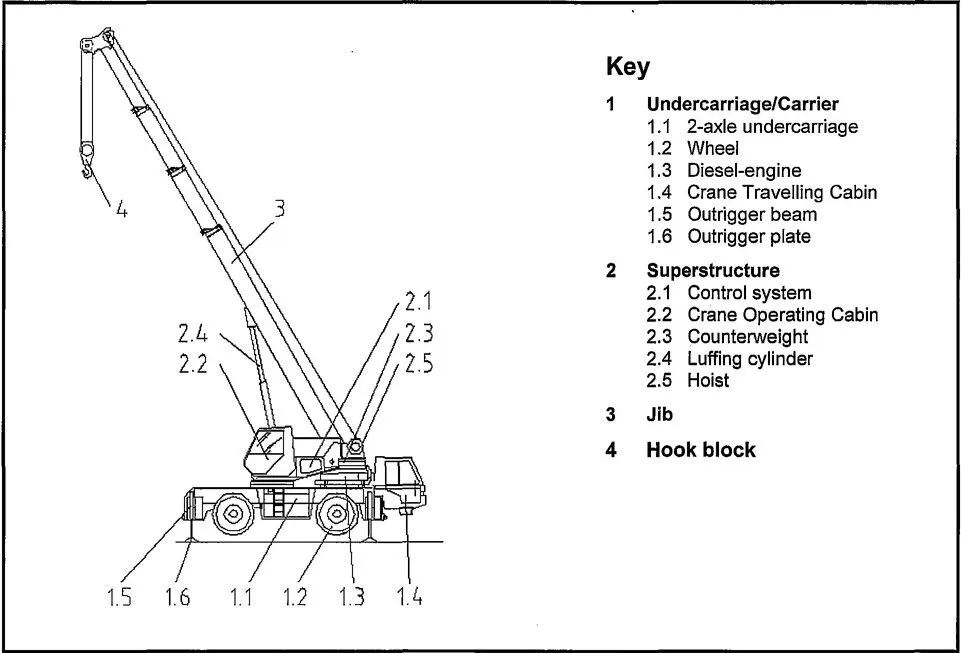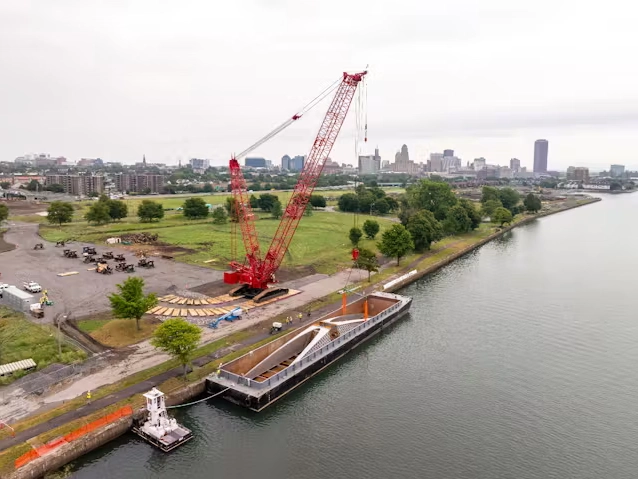
How Does A Crawler Crane Work
How does a crawler crane work? Detailed explanation of crawler chassis/truss arm/intelligent counterweight system, comparison of all-terrain crane advantages, covering super engineering application scenarios such as nuclear power plants and offshore wind power.
Core Structure: Four Core Systems Of Crawler Cranes
1. Crawler chassis system
Tank-level mobility: double crawler design (single track width 1.2-2 meters), ground pressure as low as 0.5-1.2kg/cm², only 1/3 of tire cranes, can move freely in complex terrains such as swamps and sand.
Precise steering control: The left and right crawlers are driven by independent hydraulic motors to achieve 0° radius in-situ steering and a moving speed of 0.5-1.5km/h.
VM® Track Parts
We are a crawler crane undercarriage parts supplier, specializing in providing OEM crane undercarriage parts, covering Liebherr, Kobelco, Manitowoc, Hitachi, and other brands.
2. Truss boom structure
High-strength and lightweight design: Adopting ASTM A514 high-strength steel lattice truss, the weight is 40% lighter than the box-type boom, and the maximum length is 150 meters (such as Liebherr LR 11000).
Modular assembly: Through pin connection, a team of 20 people can complete the main boom + tower boom combination within 8 hours.
3. Dynamic counterweight system
Superlift device: Through the rear cantilever beam and mobile counterweight vehicle, the anti-overturning moment is increased by 300%.
Intelligent counterweight management: The Sany SCC98000TM model can automatically calculate the counterweight demand with an error of <1%.
4. Hydraulic and intelligent control
Dual pump confluence technology: The hydraulic system pressure reaches 350 bar and provides 5,000 kN ·m torque.
Millimeter-level accuracy: equipped with laser positioning and an electronic level, the hoisting positioning error is <2mm.

Working Principle: Engineering Logic From Power Transmission To Precise Control
Phase 1: Power generation and distribution
Diesel engine drive: Caterpillar C32 ACERT engine (895kW) drives dual hydraulic pumps, with a power distribution ratio:
60% for the hoisting system
25% for a travel system
15% for slewing and auxiliary functions
Phase 2: Hoisting process control
Lifting operation: The main winch lifts the load through a 42mm diameter steel wire rope (breaking force 1,250kN), with a speed of 0.1-5m/min stepless speed change.
360° slewing: The slewing bearing (diameter 4 meters) is driven by a hydraulic motor with a speed of 0.1- 1.2 rpm.
Amplitude adjustment: The hydraulic cylinder pushes the boom angle to adjust between 5° and 85°, and the torque limiter monitors the safety threshold in real time.
Phase 3: Safety protection mechanism
Wind-resistant design: When the wind speed is greater than 13.8m/s (level 6 wind), the boom is automatically locked, and the hydraulic pin of the crawler plate starts anchoring.
Overturning warning: When the fuselage tilts more than 0.5°, the sound and light alarm is triggered, and when it is greater than 1°, emergency braking is performed.
Comparative Advantages: Why can it lift three times the weight of a tire crane?
| Parameters | Crawler crane | All-terrain crane |
| Maximum lifting capacity | 3,000 tons | 1,200 tons |
| Minimum ground pressure | 0.5kg/cm² | 1.8kg/cm² |
| Typical assembly time | 8-24 hours | 2-4 hours |
Application Scenarios

Offshore wind power installation: hoisting 90-meter wind turbine blades in the intertidal zone, reducing the cost of ship dependence by 30%.
Nuclear power plant construction: integral hoisting of the Hualong One containment dome (weighing 450 tons).
Bridge engineering: LR 11350 crawler crane was used to complete the installation of 70% of the steel box girders of the Hong Kong-Zhuhai-Macao Bridge.
